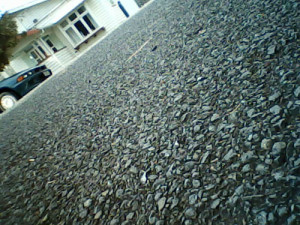It is the beginning of a “long weekend” in Auckland – I am lost in Hans Ulrich Obrist’s “do it” – a breath-taking and thought provoking compendium of “instructions for others to make into works of art”. You can read Maria Popova’s Brain Pickings post about the compendium here.
 I was thinking about writing instructions for an art project currently underway – AKA fix a one-day deal pet camera to your dog’s collar – before setting out on a walk around a local suburb. We got some promising images, plus a few folded jowl shots before bulldog slobber overwhelmed the camera mechanism.
I was thinking about writing instructions for an art project currently underway – AKA fix a one-day deal pet camera to your dog’s collar – before setting out on a walk around a local suburb. We got some promising images, plus a few folded jowl shots before bulldog slobber overwhelmed the camera mechanism.
It strikes me that SOLO Taxonomy could feature in the “do it” compendium – it is easily re-imagined as a set of instructions for someone else to make into an artwork.
My SOLO based “do it” instructions for creating art follow:
1. Observe everything.
Sub text – Notice especially those things/ideas we are blind to – those ideas and things so familiar that we feel we know them and thus no longer “look” at them. Observe things “recognised” rather than “observed” – for recognition is a barrier to observation.
2. Let one idea or thing nudge up against you.
Sub text – Let one idea brush past you like a lover with a desire to be noticed. Identify the idea. Let it capture all your attention. Do it and let it be a focus for perception. [SOLO unistructural outcome]
3. Sense the idea in multiple ways.
Sub text – Touch the idea; let your fingertips trace its boundaries and liminal zones. Caress the idea with the inside of your wrist. Rub your back against the idea. Use the idea to massage the knot out of the back of your neck. Scratch at and then pinch the idea. Pummel the idea with your fists. Rake the idea with your toes. Taste the idea; lick it, kiss it, mouth it, nibble it – take great hungry gaping bites out of the idea. Swill the idea around inside your mouth – spit the idea onto a pavement or down a drain. Listen to the idea; listen to every rustle and listen to it rage and rail. Shut your eyes and sniff, sniff, sniff the air surrounding the idea. Breathe deeply so that the air from each breath flows over the surface of the idea enveloping it. Use the Bernoulli principle to calculate the lift force on the idea. Calculate the size of the boundary layer around the idea and its evaporation index. Drag in every scent, every smell no matter how nuanced – no matter how rank. Bury your nose in the idea. Do it – all of it – and know the idea with all your senses. [SOLO multistructural outcome]
4. Encourage the idea to mingle with many other ideas.
Sub text – Let your idea form nodes and networks with other ideas. Do it by looking for patterns – symmetries and asymmetries, harmonies and disharmonies, proportions and scaling, reflections and rotations, rhymes and rhythms and irregularities and arrhythmia, causes and consequences, variance and invariance, repetitions and time lines, structures and geometries, similarities and differences, connections and disconnections, balances and imbalances. [SOLO relational outcome]
5. Form analogies.
Sub text – Find seemingly disconnected ideas that share deep truths, properties or functions. Make whakataukī. [SOLO relational and extended abstract outcome]
6. Step back and look at the idea as if seeing it for the first time.
Sub text – Look at the idea in a new way – from another perspective, another place, another time. Empathise with the idea. Become the idea. Re-create the idea. [SOLO extended abstract outcome]
Why do I post this?
I am thinking of learning as an on-going art project.
idea | ideas | relate | extend
When teachers use SOLO Taxonomy to make learning outcomes visible to students as promoted in Outcomes-Based Education (OBE); and explicitly advocated for in Constructive Alignment (Biggs, 2003) – they create opportunities for great art.
“I am thinking of learning as an on-going art project.” — Pam Hook @arti_choke http://t.co/toYMDZJ7rP /via @rogre
— NYIT Library (@NYITLibrary) October 28, 2013




